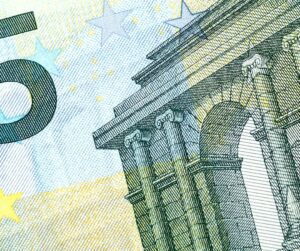Apa itu Forex? A Beginner’s Guide to Understanding the Basics
Forex, short for foreign exchange, is a decentralized global market where currencies are traded. It is the largest financial market in the world, with an average daily trading volume exceeding $6 trillion. Forex trading offers individuals the opportunity to speculate on the price movements of various currency pairs. In this beginner’s guide, we will take a closer look at the basics of forex trading.
Currency Pairs: The Foundation of Forex Trading
Forex trading involves the buying and selling of currency pairs. A currency pair consists of two currencies, with the first one being the base currency and the second one being the quote currency. For example, in the EUR/USD currency pair, the euro is the base currency, and the US dollar is the quote currency. The exchange rate between these two currencies determines the value of the currency pair.
Market Participants: Who Trades Forex?
Forex trading is carried out by a wide range of market participants, including individuals, banks, financial institutions, corporations, and governments. These participants engage in forex trading for various reasons, such as hedging against currency risks, conducting international business transactions, or simply speculating on currency price movements to generate profits.
Leverage and Margin: Amplifying Gains and Losses
One of the unique aspects of forex trading is the ability to use leverage. Leverage allows traders to control larger positions in the market with a smaller amount of capital. For example, a leverage ratio of 100:1 means that for every $1 of trader’s capital, they can control $100 in the market. While leverage can amplify potential gains, it also increases the risk of losses. It is essential for traders to understand the risks associated with leverage and manage their positions accordingly.
Bid and Ask Prices: Understanding the Spread
In forex trading, there are two prices for each currency pair: the bid price and the ask price. The bid price is the price at which traders can sell the base currency, while the ask price is the price at which traders can buy the base currency. The difference between the bid and ask prices is known as the spread. The spread represents the cost of trading and is typically measured in pips, which is the smallest unit of price movement in the forex market.
Market Hours: Trading Around the Clock
Unlike other financial markets, such as the stock market, the forex market operates 24 hours a day, five days a week. This is because forex trading takes place across different time zones, allowing traders from around the world to participate at any time. The major forex trading sessions include the Asian session, the European session, and the US session. Each session has its own characteristics, with higher trading volume and volatility during overlapping sessions.
Fundamental and Technical Analysis: Tools for Decision Making
To make informed trading decisions, forex traders use various analysis techniques, including fundamental analysis and technical analysis. Fundamental analysis involves analyzing economic indicators, such as interest rates, GDP growth, and inflation, to evaluate the strength of a currency. Technical analysis, on the other hand, focuses on studying historical price patterns and indicators to predict future price movements. By combining these two approaches, traders can gain a better understanding of the market and make more informed trading decisions.
Risk Management: Protecting Capital
Risk management is a crucial aspect of forex trading. Traders should establish a risk management strategy to protect their capital and minimize potential losses. This includes setting stop-loss orders to automatically close positions if the market moves against them, as well as using proper position sizing and risk-reward ratios. Additionally, traders should diversify their portfolio by trading different currency pairs and avoid overexposure to a single trade.
Conclusion
Forex trading offers individuals the opportunity to participate in the largest financial market in the world. Understanding the basics of forex trading, such as currency pairs, market participants, leverage, bid and ask prices, market hours, fundamental and technical analysis, and risk management, is essential for beginners. By gaining a solid foundation in these concepts, individuals can start their forex trading journey with confidence and make informed trading decisions.






